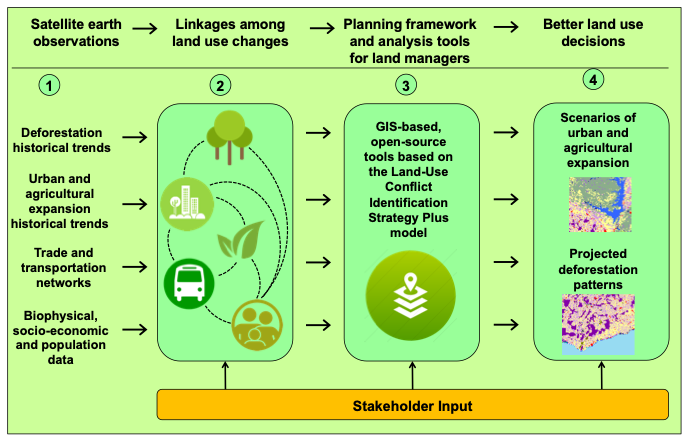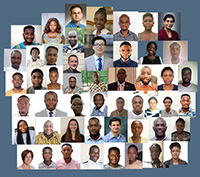About The Project
This project has been awarded by SERVIR, a joint venture between NASA and the U.S. Agency for International Development to help developing countries use Earth-observing satellites and geospatial technologies for managing climate risks and land use.
This project will enhance the current operational planning framework and building capacity for effective land use planning in Ghana. By integrating trends in deforestation, urbanization, and agricultural expansion from remote sensing with GIS-based modeling, this project will identify potential overlaps/conflicts among various sectors and predict land-use change scenarios.
Jasmeet Judge, principal investigator and a professor in the UF/IFAS Agricultural and Biological Engineering (ABE) department, leads this project with an interdisciplinary team comprising ABE assistant professor Aditya Singh, UF Geography assistant professor Olivier Walther, UF graduate assistant Changjie Chen, CERSGIS executive director Foster Mensah, ABE professor Gregory Kiker, ABE associate professor Rachata Muneepeerakul, and University of Ghana associate professor Kwadwo Owusu.

Capacity Building
 One of GALUP’s objectives is to help build local capacity in applying tools empowered by Remote Sensing (RS) and Geographic Information System (GIS) technologies to inform and ensure sustainable land use practices.
One of GALUP’s objectives is to help build local capacity in applying tools empowered by Remote Sensing (RS) and Geographic Information System (GIS) technologies to inform and ensure sustainable land use practices.
Our project includes workshops aiming at helping trainees to familiarize themselves with the use of LUCIS-OPEN, a GIS-based, open-source land use planning framework.
Read more about GALUP Capacity Building,Workshops participants, 2021
2023-2025: New Grant to study Land Degradation
 GALUP was awarded a new grant by NASA to detect and monitor risks of artisanal mining and charcoal production in Ghana.
GALUP was awarded a new grant by NASA to detect and monitor risks of artisanal mining and charcoal production in Ghana.
Entitled "Integrating Socio-Economic and Remotely Sensed Information to Characterize Conflict Precursors and Land Degradation Dynamics in Ghana", this project will be using remote sensing to develop a land use conflict identification and land degradation framework.
Read more about this 2nd phase of GALUP


.png)
.png)
.png)

 One of GALUP’s objectives is to help build local capacity in applying tools empowered by Remote Sensing (RS) and Geographic Information System (GIS) technologies to inform and ensure sustainable land use practices.
One of GALUP’s objectives is to help build local capacity in applying tools empowered by Remote Sensing (RS) and Geographic Information System (GIS) technologies to inform and ensure sustainable land use practices.